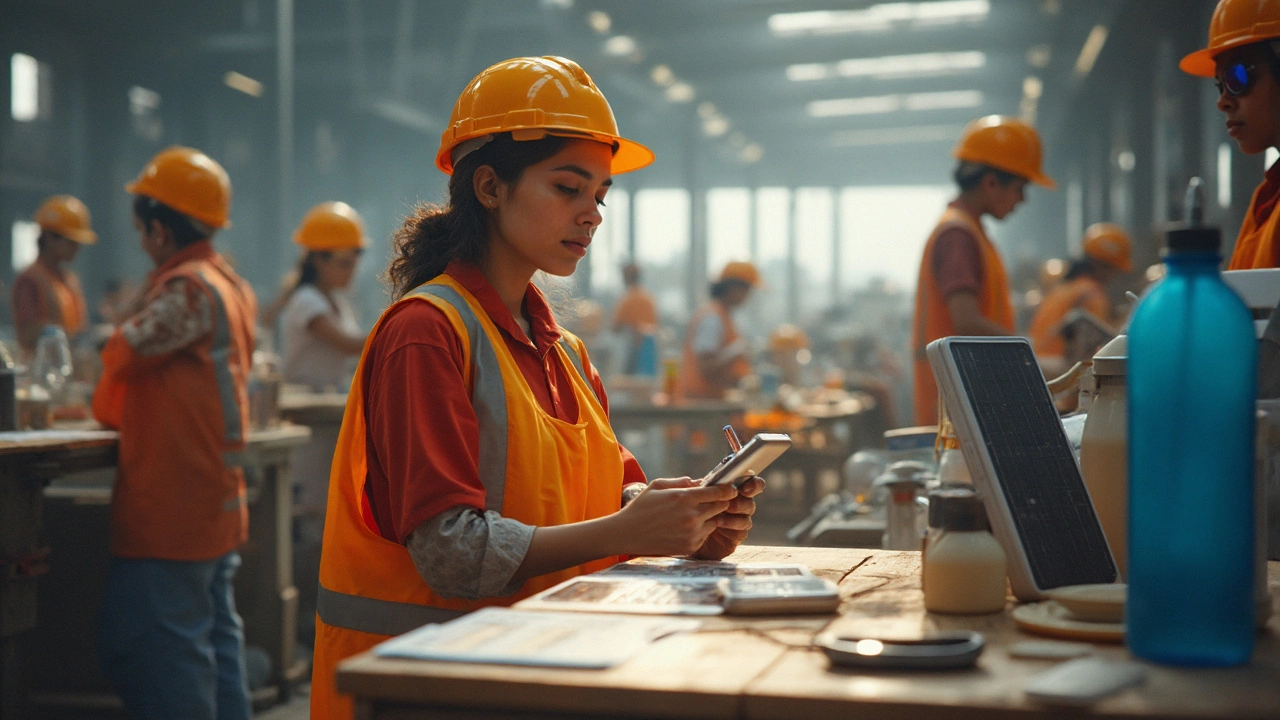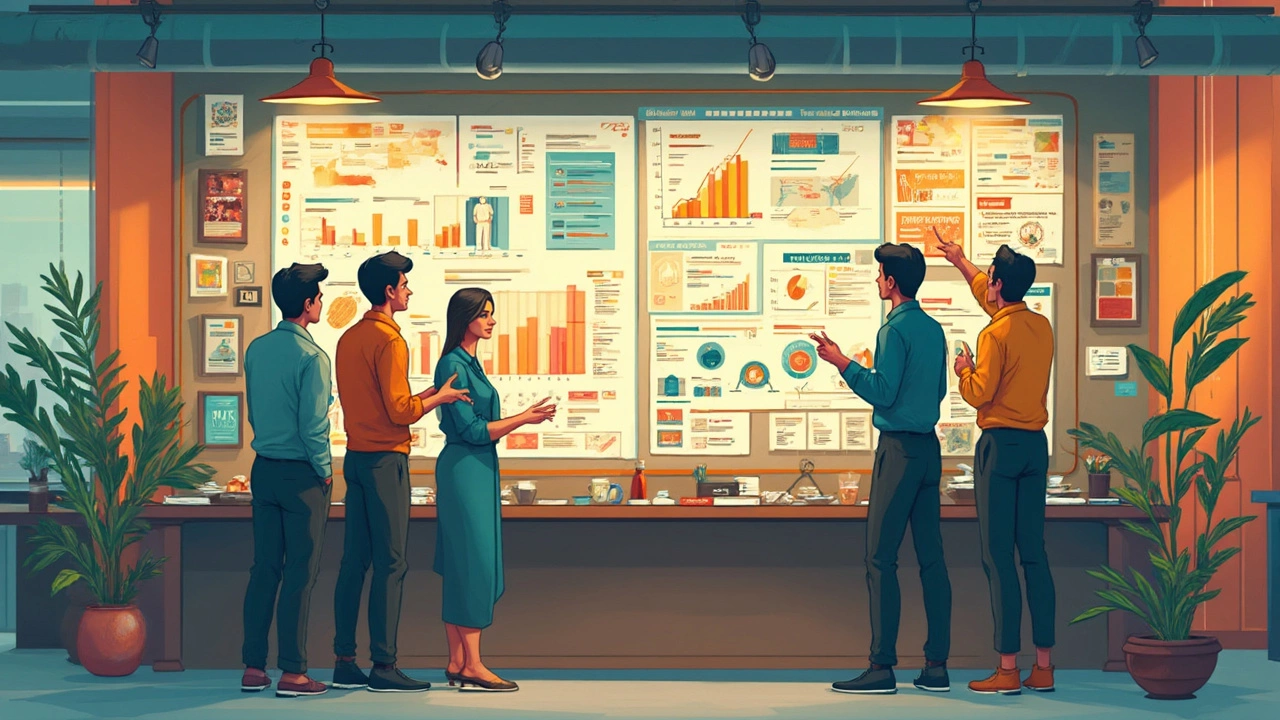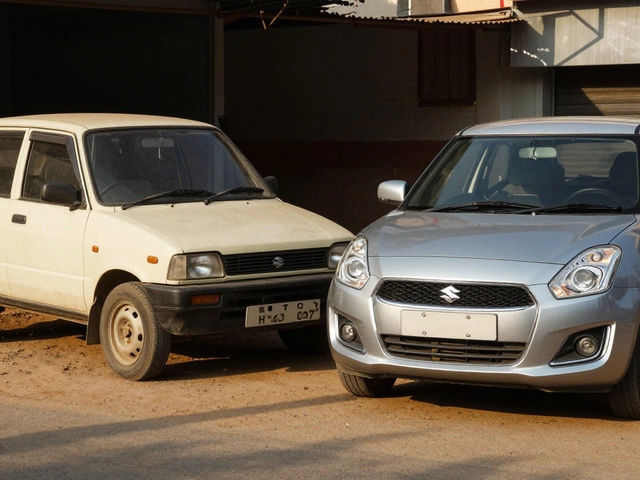Highest Demand Product Ideas for Manufacturing Startups

Looking to jump into manufacturing, but not sure what actually sells? You’re not alone—a huge chunk of new manufacturers struggle because they ignore what’s flying off the shelves right now. Instead of going with gut feelings, smart founders dig into actual demand. The wild part? Even something as simple as reusable water bottles or upcycled furniture can become profit machines if you hit the timing right.
Markets are changing faster than ever. What was big a year ago might be absolute crickets today, so just copying last year’s winners doesn’t cut it. If you want to build something people actually want to buy, you have to follow the demand signals. That means keeping an eye on things like trade data, retail trends, or the steady rise of things like electric scooters. Believe it or not, some of the best opportunities are hiding in plain sight, right in your neighborhood stores or online bestseller lists.
- Why Market Demand Matters
- Top Trending Products in Manufacturing
- Tech-Driven Opportunities
- Sustainable and Eco-Friendly Hits
- How to Spot the Next Big Thing
Why Market Demand Matters
If you want your manufacturing startup to last, you need to start with what people actually want. Market demand isn't some business buzzword—it's what keeps the lights on. If your product solves a problem people are facing or lines up with what everyone is hunting for, you're way more likely to see real sales, not just likes on social media.
Take face masks during 2020, for example. Demand shot up overnight, and businesses that jumped in early had record-breaking profits. On the flip side, companies pumping out fidget spinners after their peak basically burned cash. Timing matters, but understanding and following high demand products is more important.
Here’s why this stuff is gold for new manufacturers:
- You save time and money. Instead of guessing, you invest in something people will pay for right now.
- You get a head start on cash flow. Fast-selling products mean money comes in sooner, and that helps you actually grow.
- You can outsmart bigger, slower companies. With demand data in hand, even a small team can beat the big guys to trending products.
Checking demand isn’t rocket science either. Resources like Google Trends, Alibaba’s top searches, or even local store shelves give you solid clues about what’s hot. Keep your eyes peeled for numbers that spike, social media mentions, and anything that keeps showing up everywhere. These aren’t just trends—they’re your business lifeline.
Top Trending Products in Manufacturing
If you ask what’s buzzing inside the manufacturing world, a few categories are running ahead of the pack. Tech-related items, eco-friendly products, and anything touching health or convenience are absolute goldmines right now. But let’s look at real examples, not just general themes.
Wearable technology is rolling out in force. Think smartwatches, fitness trackers, and even rings that measure your sleep. Apple alone sold over 50 million smartwatches globally last year. It’s not just a fad—people want to track steps and health stats more than ever. That means components like sensors, flexible screens, and wireless charging docks are also in high demand.
Sustainable goods are crushing it too. According to Statista, reusable water bottle sales in the U.S. hit nearly $8.1 billion in 2024. Recyclable packaging is everywhere, and major brands are ditching single-use plastics at crazy speeds. If you can make sturdy, good-looking containers from recycled materials, you’ve got a ticket to ride this trend.
Home improvement and construction have spiked as well. With more people remote working, demand for standing desks, ergonomic chairs, and smart lighting has soared. Even stuff like paint resistant to mold or wood panels with built-in insulation are pulling serious numbers.
- High demand products: Electric bikes and scooters (last-mile mobility has exploded, and sales grew by 23% in 2024 across Europe and North America)
- Solar-powered devices: Panels, power banks, and garden lights continue to sell faster every year
- Medical supplies: Everything from smart thermometers to air purifiers and portable oxygen machines are way up post-pandemic
- Home gym equipment: Adjustable dumbbells, resistance bands, and compact treadmills lead the pack
- Pet products: Automatic feeders, purifiers for litter boxes, and custom pet beds—yes, even cats like Molly want luxury
Here’s a quick breakdown of yearly growth for some of these products:
| Product | YoY Growth (2024) |
|---|---|
| Wearable Tech | 15% |
| Electric Scooters/Bikes | 23% |
| Reusable Water Bottles | 12% |
| Home Fitness Gear | 10% |
| Eco Packaging | 18% |
Bottom line: Follow the trends, but dig deeper. Look up current sales data, scan online reviews, even scope out your local retailers. That’s how you spot the hottest manufacturing startup ideas before everyone else does.

Tech-Driven Opportunities
If you want growth in manufacturing, tech is where the action is. From smart home gadgets to health wearables, the boom in electronics and high-tech gear has totally changed where money flows. Here’s the thing: in 2024, smart devices were the fastest growing segment for high demand products in manufacturing. Why? People want convenience and safety, and they’re ready to pay for anything that saves time or cuts hassle.
Take smart thermostats—they're now in over 25% of new homes in the U.S., compared to just 8% in 2020. Meanwhile, portable solar chargers have doubled their sales in just two years as more folks work remotely or travel. Here’s a quick look at some tech-driven product ideas making waves:
- Smart home devices (thermostats, lights, doorbells)
- 3D-printed custom parts (for cars, bikes, medical gear)
- Wearable health trackers (watches, fitness rings)
- Portable power banks and solar chargers
- Electric scooter and bike components
Quick tip: Niche audiences are huge in tech. For example, cat lovers (like me—my cat Molly is obsessed with anything moving) snap up automatic feeders and smart litter boxes. These products didn’t even exist at scale five years ago.
Check out how the hottest tech categories are trending by units sold (2023-2024):
| Product Category | 2023 Units Sold (Millions) | 2024 Units Sold (Millions) |
|---|---|---|
| Smart Home Devices | 32 | 41 |
| Wearable Health Tech | 28 | 36 |
| Portable Solar Chargers | 6 | 13 |
| Electric Scooter Parts | 4 | 8 |
Want a real advantage? Watch which tech products are on preorder lists or get covered in major tech blogs. Once you see big buzz, figure out how you can manufacture a version—maybe you can make it cheaper, with different features, or for a smaller audience nobody else is serving.
Sustainable and Eco-Friendly Hits
People just don’t buy stuff like they used to. Now, if your product isn’t doing something good for the planet, you’re probably losing out on a big group of buyers. In fact, a 2024 Statista survey says over 60% of shoppers worldwide are willing to pay more for eco-friendly products. That’s why the manufacturing game has been flipping fast toward green options.
Let’s get specific. Here are some actual high demand product ideas in the sustainable category:
- Reusable packaging – Companies like Loop and Pact are banking big on containers and pouches that get shipped back, washed, and used over and over. Good for the earth, and restaurants love them for food deliveries.
- Biodegradable cleaning products – No more toxic chemicals down the drain. Startups like Blueland sell cleaning tabs in compostable wrappers, cutting out plastic bottles completely.
- Solar panels and parts – Installation requests keep hitting records, especially for small businesses and homeowners. If you manufacture panels or related hardware (like inverters), you’re tapping into a market that’s predicted to grow over 20% a year through 2030.
- Upcycled furniture – Taking scrap wood or discarded plastic and turning it into cool, modern designs is a trend that’s blowing up on Etsy and Instagram.
- Plant-based plastics – Packaging and single-use utensils made from cornstarch, mushrooms, or bamboo are seeing big orders from food brands trying to get ahead of new plastic bans.
| Product Type | 2023 Global Sales | 2025 Projected Sales |
|---|---|---|
| Reusable Packaging | $58B | $80B |
| Biodegradable Home Products | $25B | $37B |
| Solar Hardware | $181B | $230B |
Here’s the trick: Don’t try to just look green; actually be green. People do read product labels and they Google your claims. Certifications help, like using FSC-certified wood or compostable logos. And keep your supply chain clean—shorter distances mean less carbon footprint, which is a selling point too.
If you’re considering jumping in, test out ideas by starting small. Run a pre-order for your first batch of eco-friendly goods, or sell at a local market before you go big. When demand is real and not just hype, it shows up in actual orders, not just likes and shares.

How to Spot the Next Big Thing
Chasing trends sounds risky, but there’s a method behind finding the next high demand products. The trick is to use real data, not just gut instinct or social media hype. That's where a lot of startups slip up—they fall for flashy headlines instead of tracking what people are actually buying or searching for.
The quickest way to sniff out winner products is to watch what’s booming on e-commerce marketplaces. Sites like Amazon, Flipkart, or Alibaba actually show bestsellers and what’s trending, often updating in real-time. You can literally look up "Movers & Shakers" or top-gaining categories for a shockingly clear snapshot of what customers love right now.
But don’t stop there. New tech, habit changes, and even government policy can set off the next product gold rush. When the Indian government slashed import duties on electric bikes, guess what happened? Domestic interest and sales exploded within six months. Or think about the recent health wave—products with sustainability claims now grow about 28% faster than average.
- Scan product review sites: High ratings and lots of feedback often signal a surging market.
- Check Google Trends: You get a free look at what people are suddenly searching for in your region.
- Join industry groups: WhatsApp business groups, local trade groups, and LinkedIn forums share insider info way before it lands in the news.
- Ask suppliers: Vendors see demand patterns before the public. Ask what’s getting lots of inquiries.
- Study export/import data: Tools like ImportGenius or government trade dashboards help you spot spikes in orders for things like parts, raw materials, or finished goods.
Here's how rising products looked in real numbers last year:
| Product Category | YoY Growth (2024) | Where It Boomed |
|---|---|---|
| Reusable Bottles | +37% | Urban India, Europe |
| Electric Scooters | +68% | India, China, US |
| Eco-Friendly Packaging | +49% | Europe, Southeast Asia |
| AI-Powered Devices | +55% | US, South Korea |
Spotting the next big thing isn’t about wild guesses. It’s about reading the signals, crunching numbers, and being willing to jump in before everyone else. If you blend data with a little everyday observation—like what your neighbors, friends, and family keep buying—you stand a real shot at nailing the next winner in the manufacturing space.





